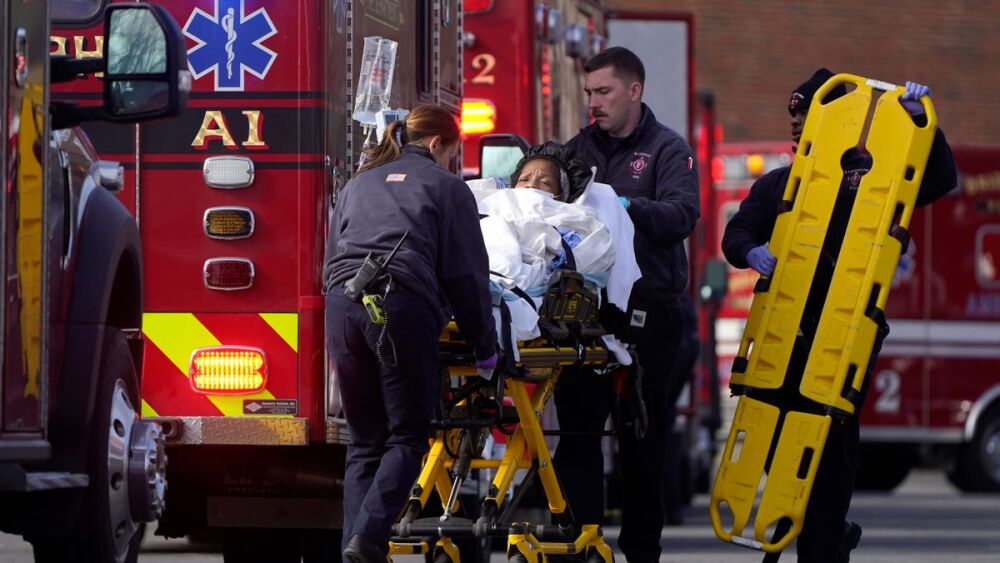When you have engaged in an endeavor for a long time, invariably, noticeable changes occur. The longer you participate in a hobby, activity or career, the more changes time brings.
I was reminded of this evolution the other night as I was assisting an old friend teaching a CPR class to a church group. The students were nice people, eager to learn. They of course had the usual questions that all first timers have. “When do you stop … how deep do you go … how do you know where to put your hands?”
My first formal EMS training came in the Cub or Boy Scouts, I really can’t remember which. To say this was a faraway place and time is a mild understatement. We are talking early 1970s.
In the scouts, you learned about subjects and then received a badge or achievement patch. Naturally, first aid was one of the subjects. The instruction was pretty basic – making a stretcher out of tree limbs and such.
Our den leader decided we needed to know more and brought in a first aid instructor. It was a real first aid course, as it went on for a month or two, one night a week, which was pretty involved for back then.
Indoctrination into EMS techniques
The instructor was an older bespectacled rotund man with white hair. I can’t remember his name, but he was really into it. He was a member of a ski patrol organization. So we knew he had seen some broken bones in his time.
Class was pretty much the same drill. The instructor would come in and take off his ski patrol jacket, revealing his ski patrol shirt. He would then announce the subject matter for the evening followed by ski patrol stories. New people, especially in EMS, love stories. I have run across a lot of storytellers in the fire department – I would venture to say more than in most other occupations.
Our instructor’s stories usually involved the worst blizzard to ever hit and an unprepared, inexperienced skier who was stranded and hurt. Our hero would mush out into the blizzard to find a skier with bones protruding. I always envisioned a Yukon Cornelius character accompanied by a Saint Bernard with the little jug around its neck. The class of 12 and 13-year-old’s would gasp with delight.
Naturally, when we got to environmental emergencies, his shining moment was frostbite. He told stories of blackened fingers and toes. He even told us that his face had been frostbitten so many times during rescues that his nose had lost its structural integrity. He offered to let class members come up and place a finger on his nose and manually move it around to make his point.
I declined, as did the rest of the class.
I don’t remember much from that first indoctrination into EMS except for the roll-over technique. This involved rolling a person on their stomach onto their back. You took the person’s feet and crossed their feet over, then twisted, and they would flop over onto their back.
I should try that one day. The medical director would probably have to be defibrillated if she read that report.
And of course, tourniquet stories were also popular. The thought of severed appendages intrigued teenagers. The instructor told us you always write the time in blood, prompting a student to ask if a pen would be acceptable. With an air of resignation, the instructor agreed it was possible.
How far we’ve come in fire/EMS
Some of the basics I learned early in my career are still relevant today. But my goodness have we come a great distance. It is amazing some of the stuff the paramedics do now.
When I first hit the station, we still had the orange radio box (Johnny and Roy calling Rampart), on the unit. It wasn’t used much; we went to standing orders pretty quick after I arrived.
Spine immobilization involved anything from duct tape to towel rolls. I think we even used sand bags if memory serves – which was good – they secured the head from movement, and you were prepared if there was a flood. I can remember at least four styles of c-collars. Now there are all kinds of premade devices that adhere to the backboard. Some departments are even clearing c-spines in the field. We secured people to backboards with everything from tape, to webbing, to a premade velcro device. I guess most places still web.
The oxygen caddy was a large green trunk. It weighed a ton. One afternoon, answering some sort of medical call, a resident clad in camouflage greeted us in the driveway with a rifle. My cohort dropped the oxygen on my foot and raised his hands. The patient turned and ran to the back yard. I couldn’t run; my foot hurt too much.
Today’s stretchers almost require a commercial driver’s license to operate. I don’t go back to the days of wearing white coats and both responders riding up front, but when I started, the stretcher was lowered to ground level and you and your associate bent down and picked up the stretcher between you and slid it in the transport vehicle. The stretchers do that themselves now.
Oh and don’t forget the certification test. We practiced the skills on each other; notably, the sling and swath head wrap. The written test always contained my favorite scenario: You are at the movie theater when there is a commotion. You arrive and find a person in cardiac arrest wearing a diabetic medic alert bracelet. You are then are given a list of choices for treatment. The test writers want you to bite on the diabetic problem; the correct answer is begin CPR.
I always felt this question was irrelevant to me – a movie popcorn addict – as I would most likely be at the concession stand. There is an open-access theater concession stand near home that I eat at regularly. We’ll talk about nutrition next month.
Yes, we’ve come a long way baby (for my age group, that was a cigarette commercial).
Let me hear from you if I sparked any memories.
This article, originally published in July 2017, has been updated.













